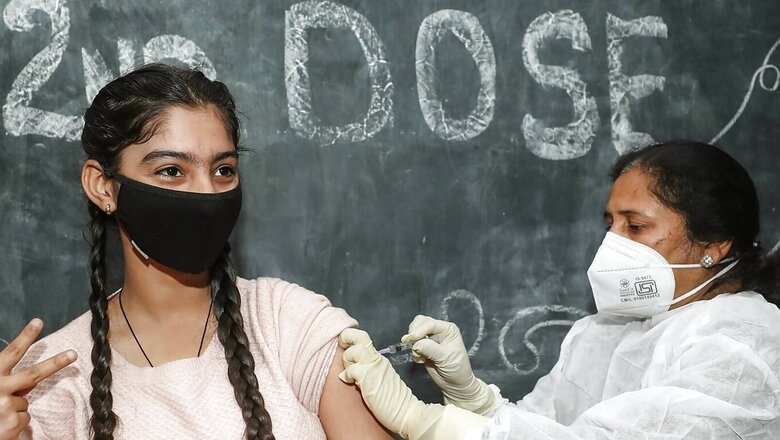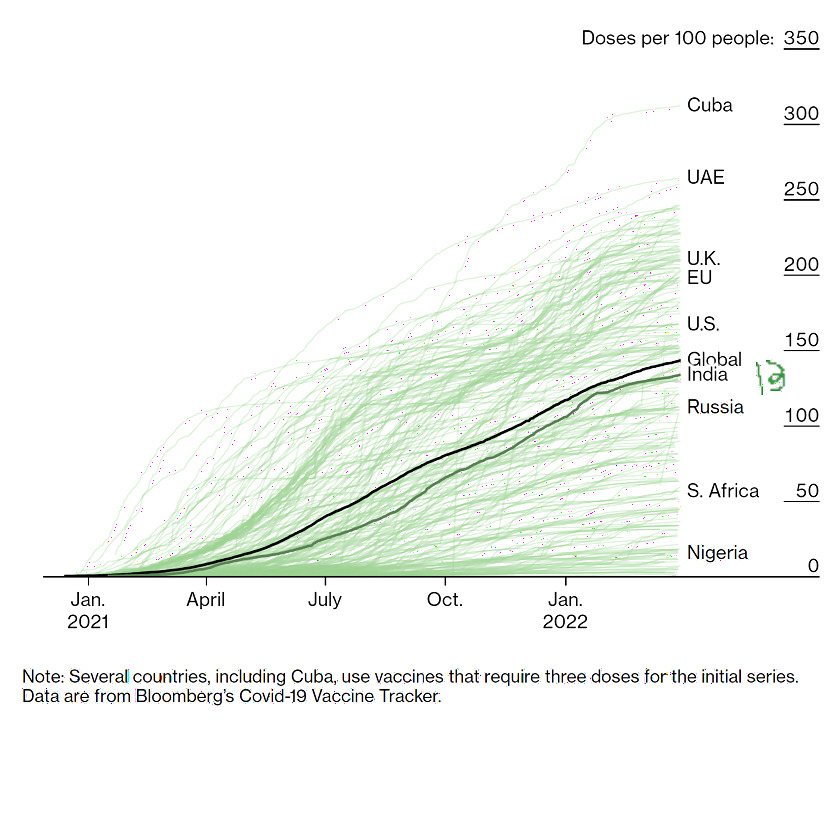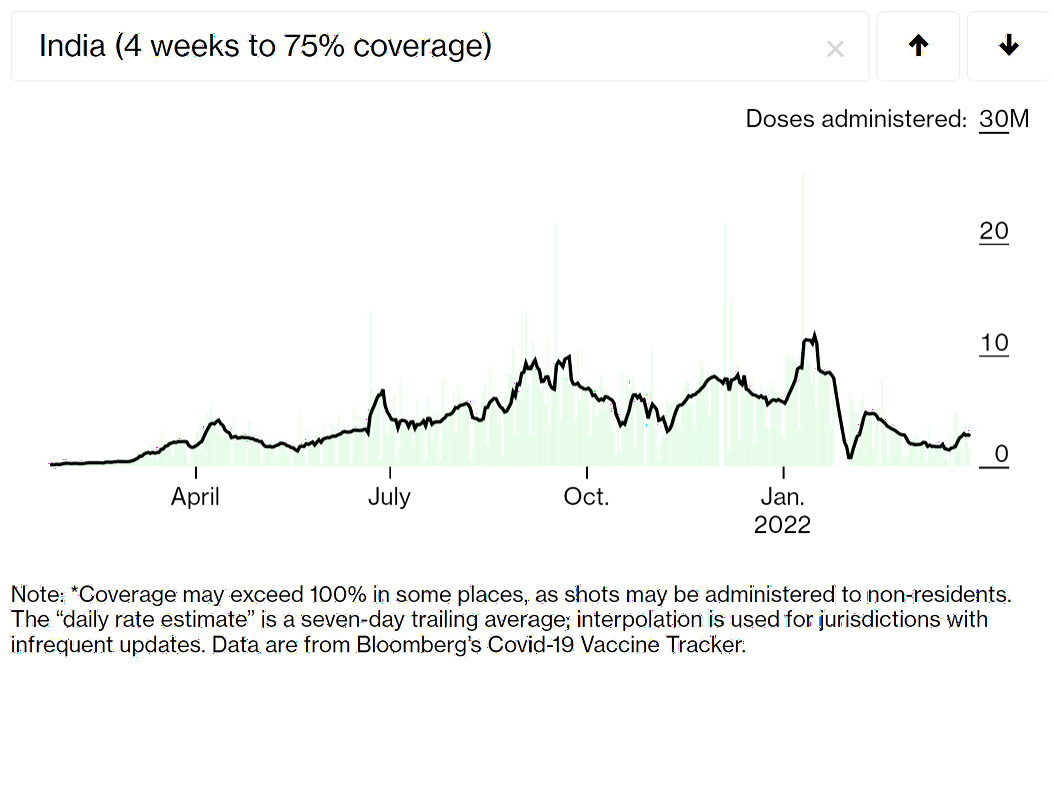
views
Stealth Variant of Omicron, aka, BA.2 became the dominant variant in India as early as January 2022 without causing an increase in cases. Now it accounts for 100% of the reported cases in recent weeks. Did we get lucky, or were there other factors that helped position us to safely encounter this new variant that is causing substantial disease and deaths in many other nations? We will answer this question at the end of the article.

BA.2 waves are washing many western European countries and the USA ashore. The World Health Organisation reported that the BA.2 subvariant of Omicron is now driving most coronavirus cases worldwide. But different countries have had different population responses; some like Austria, Netherlands, and Denmark have more pronounced outcomes like increased hospitalisations with BA.2 superimposed on the original Omicron wave. In contrast, U.K. hospitalisations and cases in England did not increase substantially as two-thirds of the U.K.’s 67 million residents are fully vaccinated, and more than half are boosted.

USA is also showing rapid replacement of cases with BA.2, but barring some states, especially in the North-Eastern states, there has not been an increase in cases. The wastewater surveillance at a third of 600 sites shows an increase in viral RNA presence, and the test positivity rate has gone up from 2 to 3%. Omicron wave in January saw positivity rates maxing at 30%, and we have come far from that massive crest. However, the BA.2 wave has already started here. How its future turn out is uncertain — it may be just a mild bump like the Alpha wave, or it may lead again to a substantial increase in cases and hospitalisations. The next few weeks are crucial to watch in this regard.
ALSO READ | As ‘Stealth Omicron’ Wreaks Havoc in China, Hong Kong, Zero-COVID Policy Fails the Test
Given the response to the “zero covid” policy in countries like China, South Korea, and Hong Kong, we have a natural experiment to compare populations that received vaccinations and those that relied on other measures like lockdowns, a complete ban on air travel, and strict quarantines. The situation got complicated by the low efficacy of vaccines developed in China like Sinovac compelling China to resort to drastic measures like shutting down large provinces like Shenzhen and clamping ban on all non-essential activities, including businesses and transport in Shanghai, for ten days that is still in force. Large numbers of Chinese adults the age of 80 and older are unvaccinated, and there is little immunity from earlier infections. Hong Kong’s spike in cases and deaths was among unvaccinated older adults.
Thus, we have unequivocal evidence that vaccines work. And existing vaccines work well against hospitalisations, and severe disease caused by all variants of Omicron, provided we add a booster to the initial two doses. During the omicron wave, vaccination with a booster reduced the chance of hospitalisation and death by more than 90%. Infection with Omicron original variant also provides cross-immunity against reinfection with its BA.2 variant. The USA has approved a fourth dose or second booster for persons over 50 years of age and other vulnerable populations like the immunocompromised. An Omicron-specific vaccine is also likely to be out by May of this year.
In most countries facing Omicron waves, it has proved to be a pediatric wave, that is, it has affected children in disproportionate numbers. The U.K. Office for National Statistics said 2-to-11-year-olds had the highest rate of infections of any age group in the country as early as March, with 4 percent testing positive on March 5. One reason could be that most countries do not vaccinate kids under 5. Children may have milder diseases, but they transmit the virus in full. Given the very high transmission rates of Omicron, especially BA.2, many more kids are falling sick and hospitalised. Fortunately, Pfizer and Moderna have developed vaccines for kids aged 6 months to five years and submitted them to the US FDA for Emergency Use Authorisation. These may be in use soon. Also, a study by Boston Children’s Hospital shows vaccinating pregnant mothers, especially late in pregnancy, prevents severe disease among infants. Vaccinating the children – the only populations not covered in full in most countries- must be the new global priority aiming at the final suppression of the pandemic.
Now to answer the question about India raised in the first paragraph. We did not just get lucky. Serosurveillance of the Indian population showed the presence of antibodies against SARS-Cov-2, the virus causing Covid-19 among 75% of the population as early as September 2020, and given low vaccination rates at that time, it was mainly from previous infections. Now, superimposed on immunity from a big Delta wave, widespread Omicron provided cross-immunity against BA.2 variant. The high vaccine rate is a force multiplier. Another factor is the relatively younger age of the Indian population (median age 28) able to bear the burden of the disease better than older populations of European countries. Young people infected by the coronavirus are often asymptomatic, accounting for the low number of reported cases. Covid-19 severity increases proportionately with age.
Other factors like the large rural population spending more time outdoors in wide-open spaces, more natural ventilation in homes than confined air-conditioned spaces, higher temperatures, and so on, could be contributing. However, despite these factors, we saw a massive wave of Delta causing more than 400,000 deaths, enabling us to say that proactive policies of our government have helped Indians to bear the new wave safely.
The world lauds our most enormous vaccination coverage due to the tireless and pin-pointed efforts of our visionary Prime Minister Narendra Modi. We have, thus far, put 1,83,82,41,743 Covid-19 vaccine doses in Indian arms (March 30, 2022; Ministry of Health and Family Welfare, India), making it 133 doses per 100 people. The effectiveness of indigenous Indian vaccines is far better than Chinese and is in lockstep with mRNA vaccines in their effectiveness against Omicron (NEJM).

Experts term the current phase of Covid-19 a “pandemic of the unvaccinated.” We must extend the vaccines to the entire population, including children less than five years of age. Since the vaccine effectiveness of every vaccine, including mRNA vaccines, wanes after some weeks, regular boosters are needed at intervals depending on the period of effectiveness. Returning to normal or living with Covid-19 as we live with Flu will need vaccinating 70-85% of the population, with booster shots needed to counter the flares and neutralise new variants that may spring up any time from among pockets of unvaccinated people. Bloomberg reports India will achieve 75% coverage at the current vaccination rate in four weeks. That is a tremendous achievement of the current government that benefits the entire humanity, not just India. We can stop being the source of new variants at this rate, while China continues to be a persistent threat to the world in this regard. Here, the pro-active 5T transformational approach of Odisha state of India, aiming at both prevention through vaccination and rapid therapeutic control of disease through free and doorstep services, is an inspiring model.
However, we need to remain cautious against novel variants. Recent variants like Omicron were immune-evasive, meaning they could reinfect even the vaccinated, albeit the disease caused was mild primarily among them. A genuine concern would be a more immune-evasive variant that is also more lethal. Continuous surveillance and rapid adaption of existing vaccines against such variants would provide a safety net against massive, pandemic grade surges.
Special care for the aged and immunocompromised will remain an active task, even when the pandemic gets endemic like Flu. They shall need continued boosters, masking, and testing even when we lift such restrictions for all others.

As a final note, we must prepare for a chronic pandemic of long Covid- a consequence that may follow even the mild cases of Covid-19. 10-30% of all Covid-19 infections (with a good 10% among vaccinated) lead to a syndrome of chronic fatigue, brain fog, vision problems, and so on. In the U.S., the most conservative estimates are that 1.6 million are already out of the workforce due to long Covid, and in the U.K., a quarter of employers cite it as a leading reason for long-term absence. Health personnel must train to identify and treat patients with long Covid that may present with very disparate symptoms (Two among family and friends got retinal vein bleed and brain inflammation months after a mild infection). So, the best strategy against Covid-19 is to prevent infection. And with governments across the world lifting the restrictions, the responsibility is now squarely on the individuals.
The author is a doctor and IAS officer who has worked as Special Secretary, Health; Commissioner Food Safety; Drugs Controller, and Project Director for HIV/AIDS Control Program for Delhi Government. She is currently pursuing doctoral studies in public health, with a focus on Covid-19 at Harvard University. The views expressed in this article are those of the author and do not represent the stand of this publication.
Read all the Latest Opinion News and Breaking News here
















Comments
0 comment